One of the events at this year’s Venice Film Festival, in the immersive section, was the presentation of the highly anticipated BLUR by Phoebe Greenberg and Craig Quintero. Quintero returns to competition after three acclaimed short films (A SIMPLE SILENCE, OVER THE RAINBOW, ALL THAT REMAINS), accompanied by the founder of PHI in Montreal, to deliver a powerful and complex work that questions the excesses of society. An immersive theater experience that definitively breaks with the codes of simple XR creation. An experience produced by PHI Studio, Riverbed Theatre, and Onassis Culture.
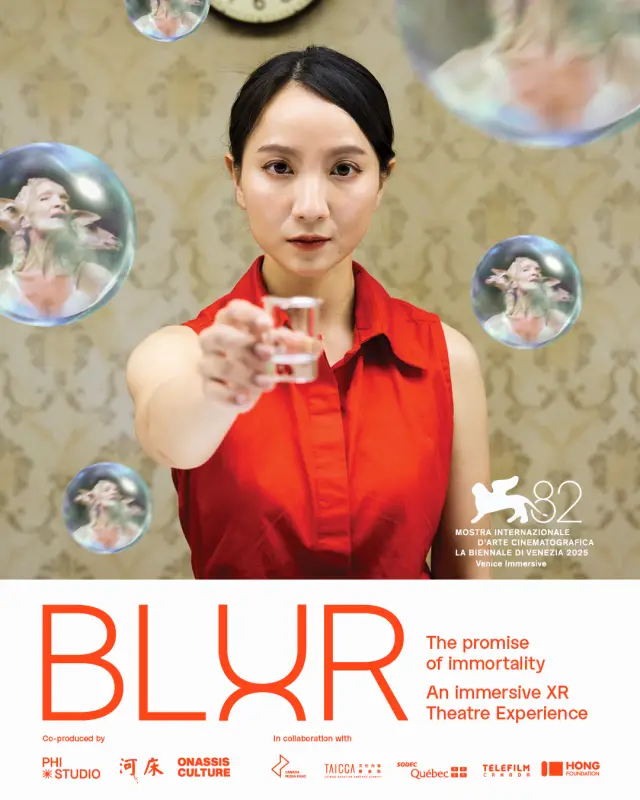
In BLUR, grief becomes the crucible for confronting the most urgent ethical dilemmas of our age. Set in a near future where cloning and de-extinction technologies have leapt from fiction to reality, a mother shattered by loss faces an unimaginable choice: to resurrect her drowned child through the power of science. This poetic fusion of live performance and extended reality immerses you in a world where the boundaries between real and virtual, natural and artificial, collapse.
Through innovative motion capture and augmented reality, actors’ raw emotions spill into mesmerising virtual landscapes, guiding you through a haunting exploration of love, loss, and the perilous consequences of playing God. Encounter figures like Dolly—a human-animal hybrid embodying scientific triumphs and ethical ambiguities—and traverse an AI-controlled underground facility where humanity’s ambitions and follies intertwine.
BLUR poses the ultimate question: Can science mend a broken heart, or will it unravel the essence of what makes us human? Amidst a world where resurrected mammoths roam and the environment hangs in the balance, the production delves deep into the moral quandaries of defying death and altering fate.
A profound journey into the depths of sorrow and desire, BLUR is a theatrical experience that shatters conventional storytelling, daring you to witness the ramifications of resurrecting the dead.
Curatorial Statement
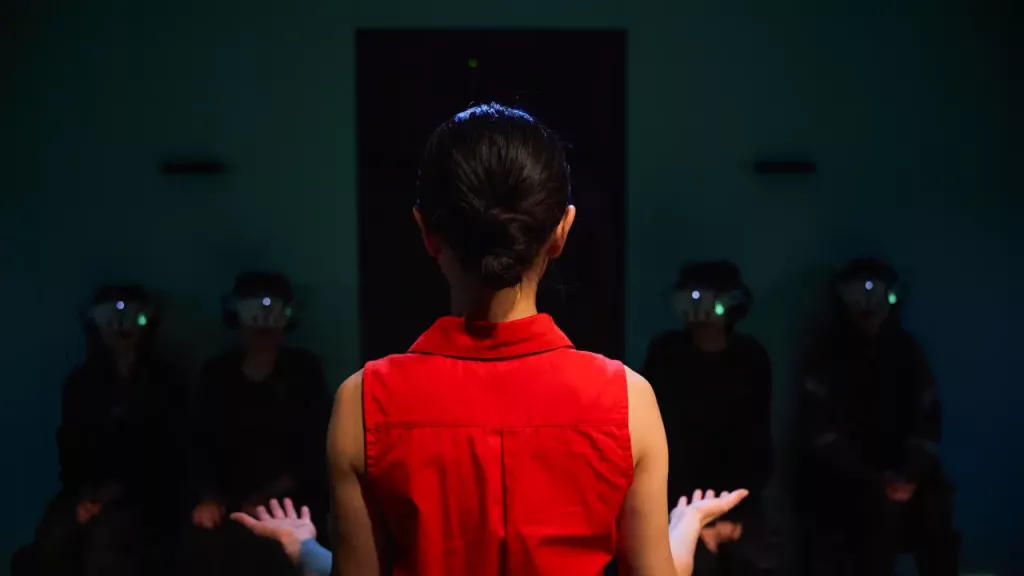
A question of letting the audience in
Phoebe Greenberg – In 2022, I was at Venice Immersive, and I had the opportunity to see Craig’s ALL THAT REMAINS. I was struck by the transition from a theatrical experience to 360-degree cinema. I sensed the craftsmanship of his set design, as well as a certain intimacy and poetry with the actors. It intrigued me, so we struck up a conversation.
Craig Quintero – As we (the Riverbed Theatre in Taiwan) were transitioning from live theatre to 360° virtual reality, we met Phoebe and the PHI Studio team. The question we raised together was really how this next project would allow the audience to physically move around in space. We then tried to determine which technologies we wanted to incorporate into the play. Some of our early conversations focused on how we could actually create a collage work combining different atmospheres and perspectives. But instead of using paint and found objects, we exploited the possibilities offered by virtual reality. What languages did we want to incorporate? How could we assemble these elements? We discussed how we could allow the audience to fully immerse themselves in the work, so that they could accompany us on this journey.
P. G. – BLUR was born out of our shared experience in theatre. During our discussions, we talked about dramaturgy, the relevance of the subject matter, and how we could bring all these elements together. From a live transition and a smooth introduction to an entry point for the audience into the VR experience. That was at the heart of our initial discussion. As the project progressed, working with a team of developers, we began to understand how to push the boundaries of the immersive works we had collectively seen over the years. And it was also an opportunity to think about scale.
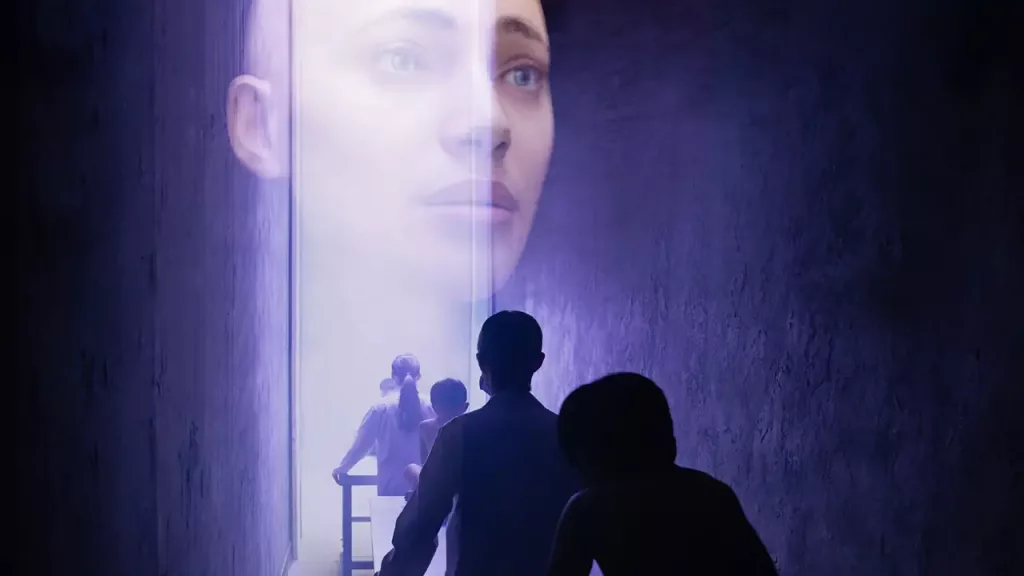
P. G. – At PHI Studio, we co developed and coproduced THE INFINITE with Felix & Paul Studios, to create sustainable work. That opened up a possibility to have 160 people on the floor at the same time; that was a great achievement. And then, we scale back from this large scale free-roaming exhibition to produce a different format, which could maybe fit in a theater or a museum presentation.
BLUR: how to find a story that raises relevant questions
C. Q. – The idea came from Phoebe, who had read an article about the reappearance of the woolly mammoth baby, genetic engineering, and the biology of resurrection. These ideas, and the science behind them. This led to a very fruitful conversation, meetings, and Phoebe brought a large sheet of paper on which we began to sketch ideas, notes, roadmaps with words and images. It was the first step in writing, without knowing where to start, or how the middle or end would unfold.
C. Q. – We did a lot of research on how other artists have approached these themes. This helped us find our common vocabulary. These initial conversations were very fruitful, without wanting to say too much. We didn’t want to give a definitive answer, but rather to offer a poetic space where the audience could really enter into the work and engage with it. There is a common thread, but that’s not really the most important thing. There is this foundation around a mother and her child, which runs through the entire experience, but it’s not really a story about them. I hope it’s more of a deeper reflection on loss, family, grief, and in a way, what scientific possibilities offer us today.
P. G. – Initially, it was an inspiration, in the sense that it was a relevant topic. And it raises broad questions about ethics, sustainability, climate change, all issues that deeply affect us at this moment in history. It was important to immerse ourselves in a relevant topic, then find the theatrical threads to turn it into an emotional and human experience.
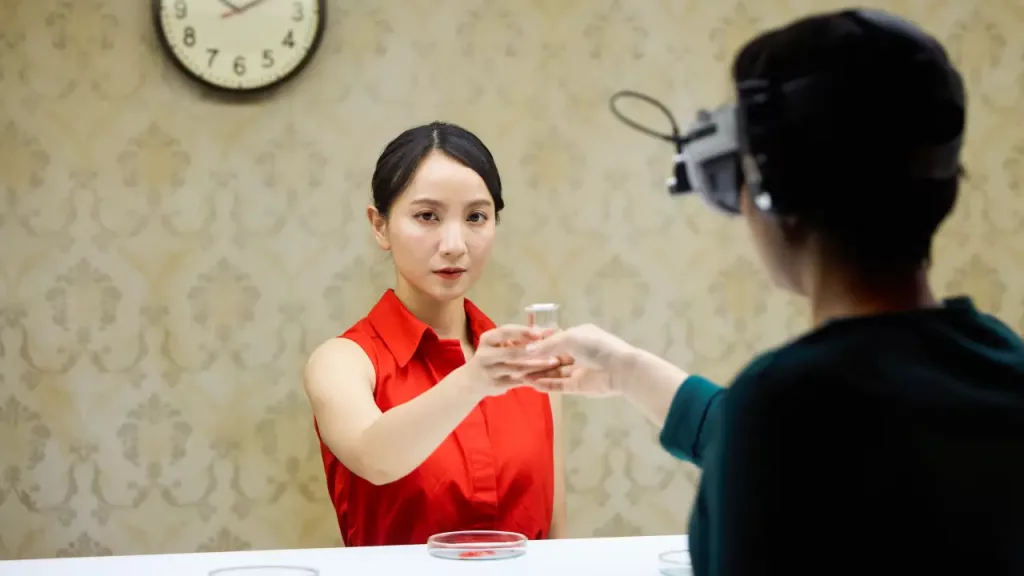
P. G. – Science and technology lead us (in a well-documented, analytical way) to very existential questions, whether we are talking about death or the game of our lives through our data (AI…). What do we imagine beyond our mere physical existence? What does this imply for our lives?
A collaborative and international piece
C. Q. – Beyond the discussions Phoebe and I had, we really brought together an incredible team of collaborators to share their expertise and knowledge, including in the field of technology. Edouard Lock was responsible for the choreography. Yu Jun is a talented musician based in Taiwan. Bringing together this collaborative team, which went beyond our conversations, added a new dimension to the experience. We really gave each member of the team the creative space they needed to add their own voice. This greatly enriched the project.
P. G. – It’s like a theatre rehearsal where we take a collaborative approach to reach the final destination. Except that in this case, we both come from live theatre and suddenly find ourselves rehearsing with people behind computers! It was a huge learning curve trying to articulate the story. But the experiment of building these synthetic worlds and integrating more traditional practices, such as choreography, live dance, musicians, and finding a different platform in the media world, was really exciting for me. Also having the opportunity to work with developers, seeing what creative solutions they come up with. This gives us two years to experiment and discover ‘happy accidents’ that have benefited the project.
C. Q. – One of the most difficult challenges was motion capture with live performers, and really making the movement fluid, developing technology that allowed the person to put on everything they needed to be able to perform motion capture quickly and efficiently. Thomas Azoug has done a remarkable job here. He has found a very clever method to achieve this, refining the movements to make them as realistic as possible. I think that where we ended up, and I think as the play progressed, it sort of continued to have these new iterations where her movements became more and more graceful, and she seemed more and more engaged with us. She is a protagonist after all. How do we invest in her? We need the same intensity and focus that we have with an animated character as we do with a live performer. Finding that balance between the two was key.
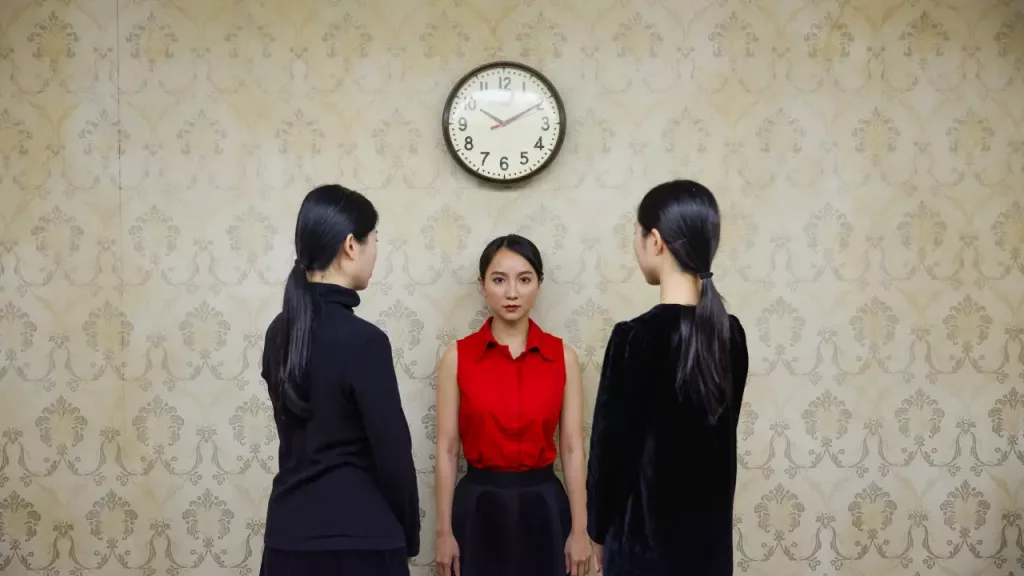
The role of the audience in BLUR
C. Q. – When (Riverbed Theatre) ventured into 360° virtual reality, we had already been staging live theatre performances for audiences of one person in Taiwan. We really placed the audience at the centre of this universe and took great care with their experience. During our initial discussions about BLUR, we wanted, within the limits of technology, to anchor the project in this strong physical presence. With the materiality of the space, the walls, that is to say… Instead of lightweight panels, it’s heavy wood. You can feel and see the brushstrokes of the paint.
C. Q. – And it’s about seeing and being seen, because even if you’re a spectator, you’re also being observed. I think this kind of blurring of boundaries creates a dynamic relationship between the artist and the audience. They are directly involved: they don’t just watch from behind the fourth wall. That contact is really important, the materiality of it.
P. G. – It’s exciting for me to come full circle, because I’ve been doing this job for the last 20 years. I think about the audience’s engagement with some of these new works with PHI. Presenting XR works in a museum context, with different works accessible to the public. Pushing the boundaries with THE INFINITE in a free and large-scale space. And then, as we saw things evolve, it was really interesting to return to a narrative and dramatic work like BLUR that incorporated the comfort of engagement with the physical actor. Because of the sensation of physical touch and the surprise that human contact brings to a virtual reality experience, we wanted to move between formats in a very comprehensive and fluid way. We wanted to find consistency between our physical selves and our virtual selves. On this we were inspired by immersive theater, like what PunchDrunk does for example. A company we collaborated with previously on BELIEVE YOUR EYES, an immersive play presented at PHI in 2019.
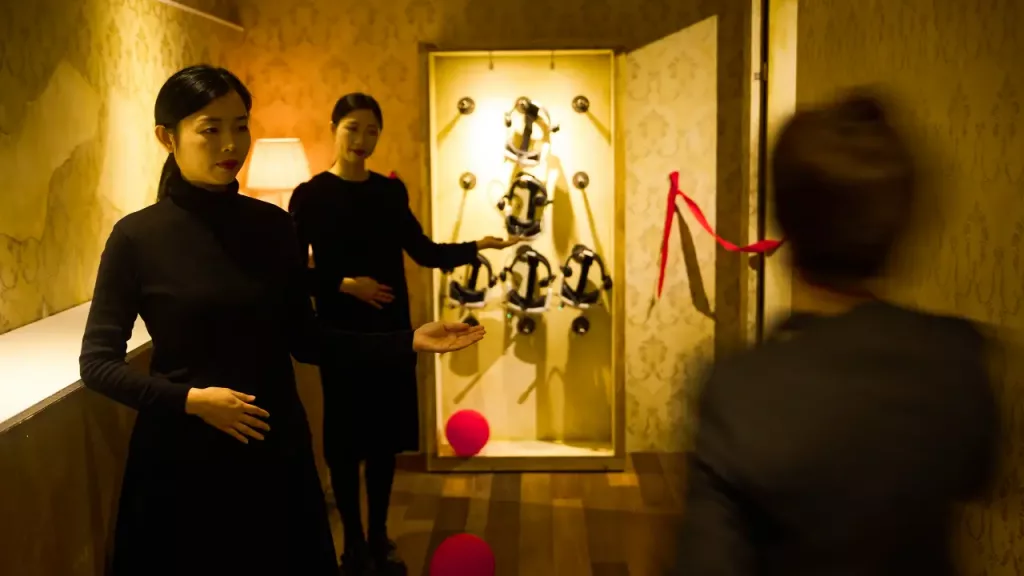
P. G. – At the beginning of my career, I was very interested in critical thinking and the theatre of the absurd. The relevance of the subject had to be reflected in humour and critical thinking. It is also an opportunity for us to enter a fantasy world. We create it from a physical anchor point, then we try to (pleasantly) unbalance the audience so that they feel like asking themselves, ‘Where am I?’ That’s the magic and opportunity of this technology, which we can’t reproduce in the same way in theatre.
C. Q. – With BLUR, it was really about finding a way to combine different languages so that the audience would feel comfortable switching from one to the other. It’s like a process of strategic destabilisation, where you’re constantly trying to pull the rug out from under the audience’s feet (a fusion of languages, from animation to mixed reality, lasting a minute and a half), without being violent – or pushing the experience in such a way that you hopefully stay one step ahead of them. Find ways to connect them in surprising ways that make sense within the narrative structure.
BLUR, what’s next?
P. G. – BLUR is coming to Montreal in February 2026. Many theatres are very interested in programming this play. We already presented it in Taipei last Spring.
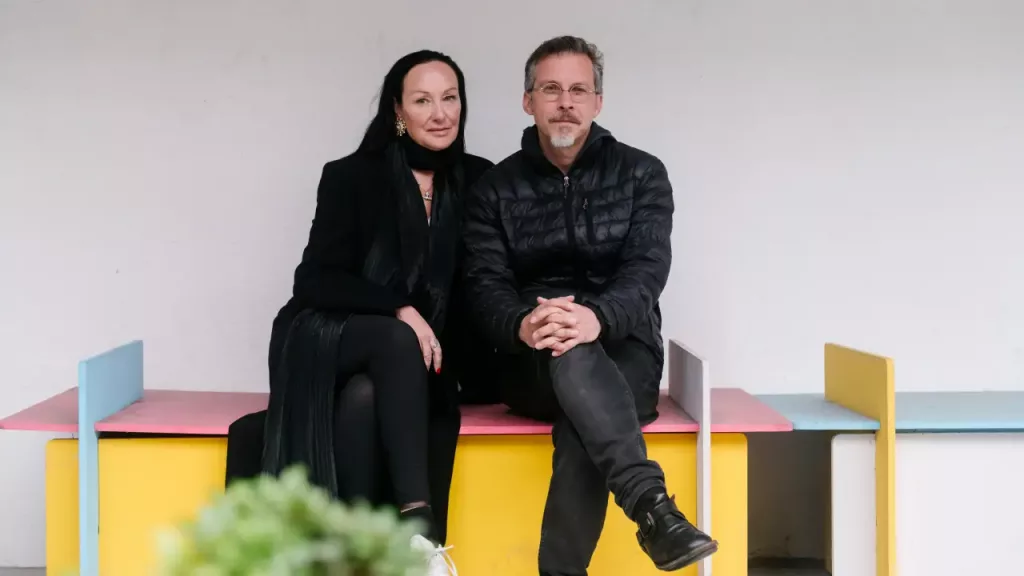

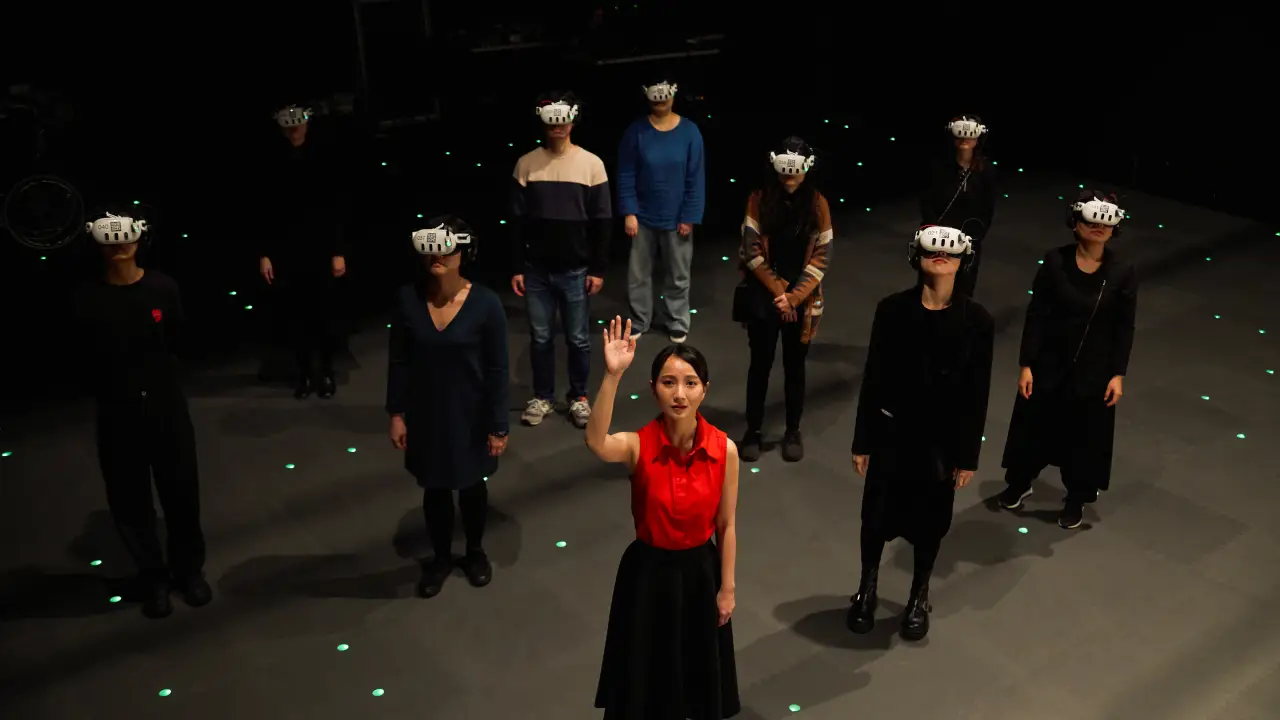

Leave a Reply
You must be logged in to post a comment.